
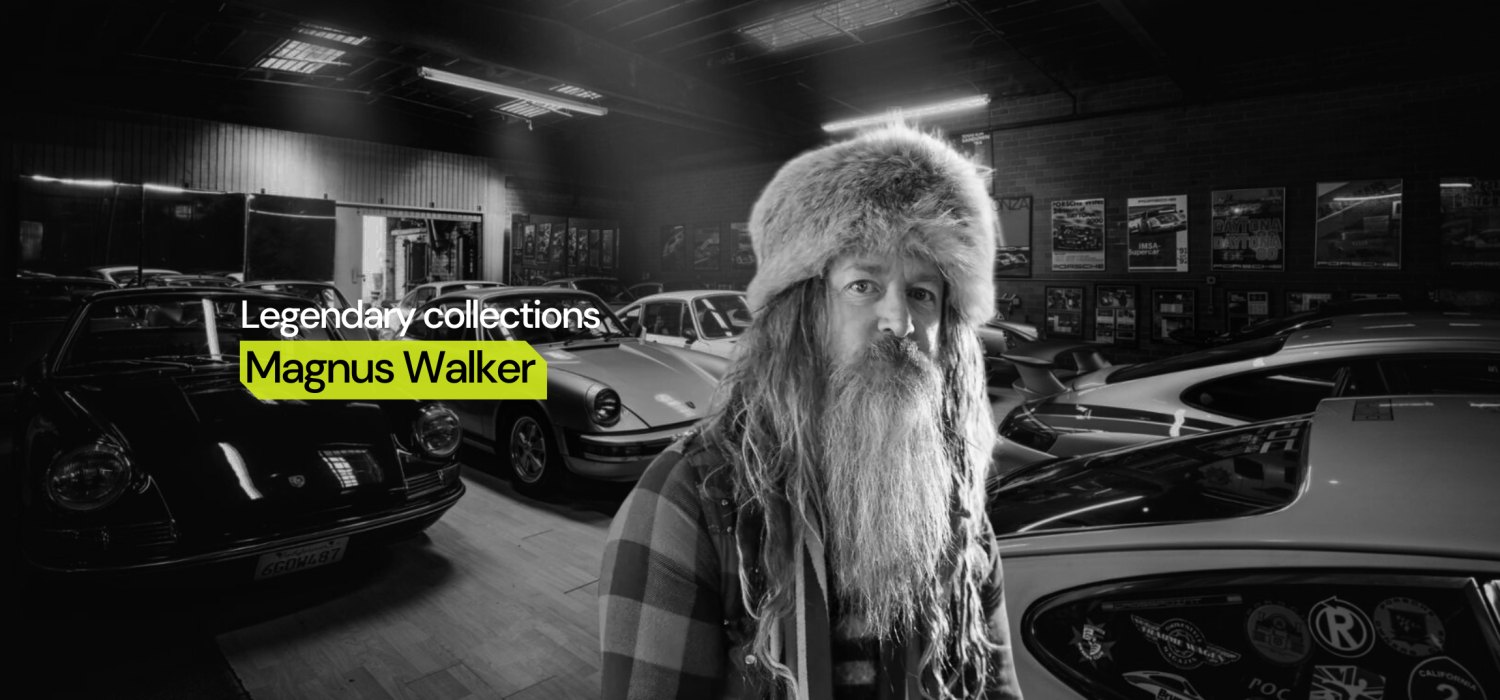
Magnus Walker Porsche Collection: Where Every Car Has Scars and Soul
When you first hear the name Magnus Walker, you don’t immediately picture the stereotypical car collector. No tailored suit, no manicured garage floors, no silent admiration from behind a velvet rope. Instead, you get long dreadlocks, tattoos, a distinct British accent and one of the most iconic Porsche collections in the world. Known in the automotive world as the “Urban Outlaw,” Walker’s collection isn’t just a showcase of cars. It’s a deeply personal, highly expressive blend of street culture, racing history, and air-cooled obsession.
And it’s not just about owning rare Porsches. It’s about living with them, wrenching on them, and giving each car a second life in a world that often prioritizes concours over character.

Why Magnus Walker Collects Cars – And Why Porsche?
Before diving into his garage, you need to understand the man. Magnus Walker didn’t grow up with wealth or easy access to sports cars. Born in Sheffield, England, he moved to the United States as a teenager, chasing the dream of fashion design, eventually launching a successful clothing label. But the car bug had bitten him early, particularly when he wrote to Porsche at age 10, telling them he wanted to work for them. To his surprise, they wrote back. That letter didn’t get him a job, but it planted a seed.
So why Porsche? Walker has said it himself: “I didn’t choose Porsche. Porsche chose me.” There’s something about the brand’s DNA – the blend of German engineering with understated cool – that resonated with his own rebellious but precise nature. To Walker, a Porsche is more than a machine; it’s a canvas for expression, a piece of industrial art you can drive.
And unlike collectors who focus purely on mint condition or investment-grade examples, Walker gravitates toward the misfits – the cars with stories, scars, and patina.
The Downtown LA Warehouse: More Than Just a Garage
Magnus Walker’s collection is housed in a converted 26,000-square-foot warehouse in downtown Los Angeles. The building itself is a reflection of the man: industrial bones, creative spirit. The space doubles as his home, workshop, and gallery, not just for cars, but for everything he’s passionate about. Brick walls, vintage posters, metal staircases, worn leather couches – it’s as far from a climate-controlled vault as you can get.
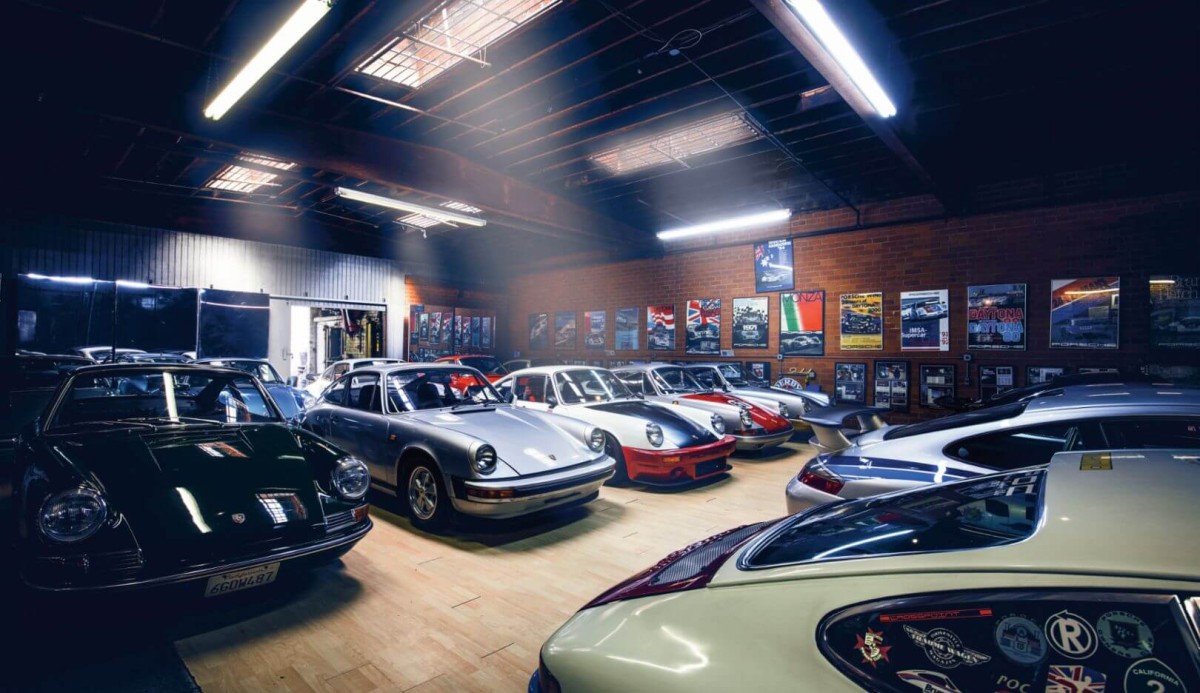
But don’t let the grungy vibe fool you. The cars are well cared for. He may not obsess over polish and paint correction, but every engine runs, every shifter slots into gear with purpose, and every machine is meant to be driven. He stores his cars nose-to-tail, often with motorcycle helmets resting on the seats, open tool chests nearby, and vinyl records playing in the background. This is not a museum. This is a lifestyle.
The Crown Jewels of Magnus Walker’s Collection
While the full list of cars in Walker’s garage changes from time to time as he’s not shy about letting cars go to make room for new ones, the core remains constant: Porsche. At one point, he owned over 50 examples from Stuttgart, mostly air-cooled, mostly pre-1998, but all with stories to tell.
Walker’s first Porsche was a 1974 911, but his best-known early car is the 1971 911T, which he transformed into a narrow-bodied street-racer. This car became the foundation of his “Outlaw” aesthetic: flared fenders, drilled pedals, custom wheels, mismatched interior panels – a rebellious yet respectful tribute to Porsche’s racing heritage. It also set the tone for what would come: not restoration to factory specs, but re-imagining for spirited road driving.
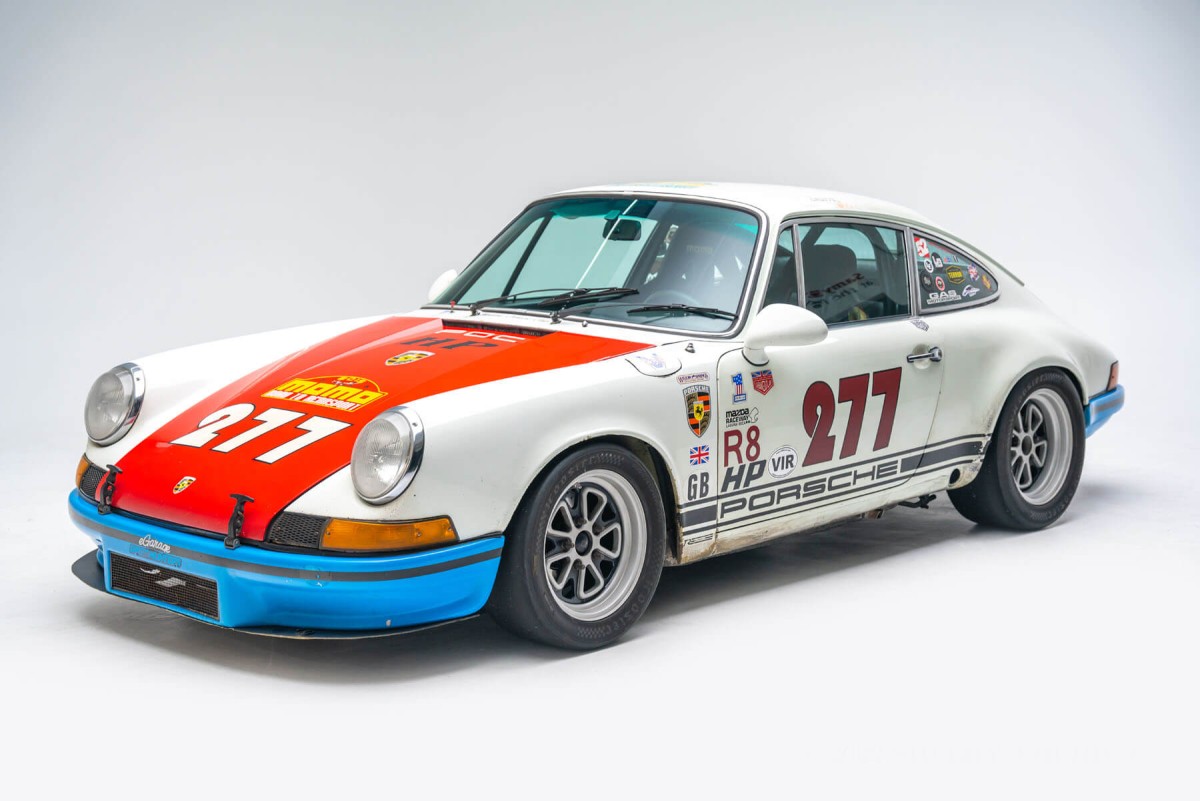
If there’s one car that embodies the Urban Outlaw ethos, it’s the STR II. Based on a 1972 911, this car blends 911R styling cues with RS and ST inspirations. It features custom-made Fuchs-style wheels, a powerful 3.2-liter flat-six, and plenty of handcrafted details. It’s raw, analog, loud, and not afraid of canyon roads. It’s also one of the most photographed cars in his fleet, appearing in magazines, YouTube videos, and on T-shirts worn by fans around the world.
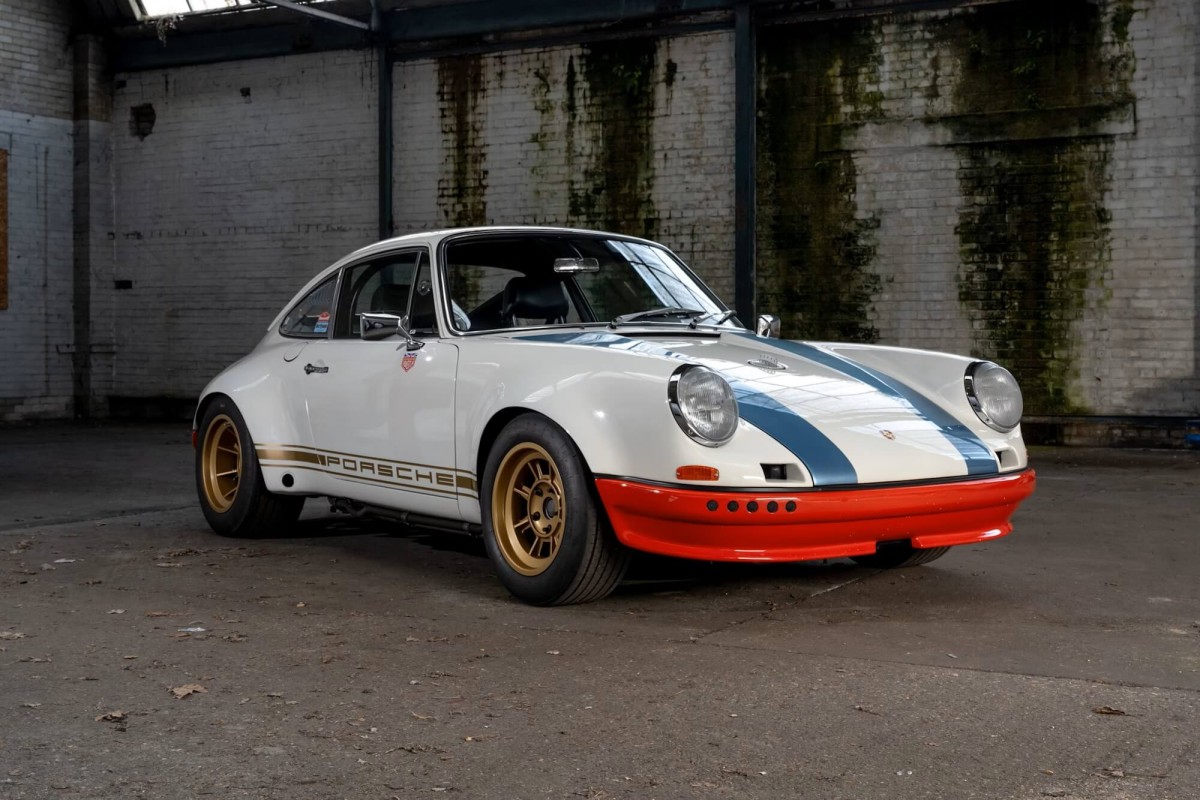
One of the more extreme builds in his garage is a streetable homage to the legendary 935 “Moby Dick.” Though not a real factory 935, the spirit is there: wide-body kit, aggressive aero, and vintage race livery. It’s a rolling celebration of Porsche’s dominance in endurance racing, made street-legal (barely) by Magnus himself. This car isn’t meant to blend in. It’s meant to make statements, both audible and visual.
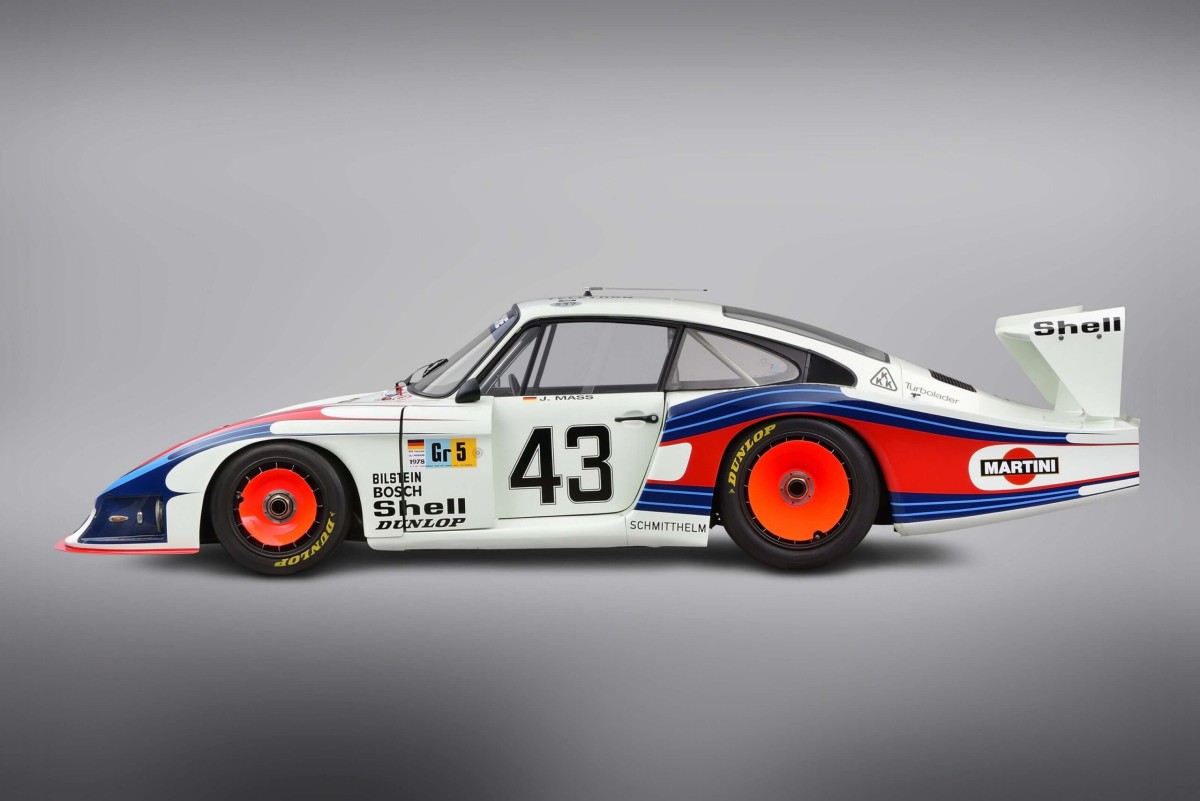
While Walker is known for his love of air-cooled models, he’s also been vocal about his appreciation for the Porsche 996 – a model once dismissed for its “fried egg” headlights and water-cooled engine. He owns several 996s and has even gone on record calling them “a modern classic waiting to be recognized.” In fact, his growing interest in the 996 mirrors the rise in collector attention toward these models – especially rarities like the 996 GT3 and the Turbo with manual transmission. For Commody’s audience, this is more than a footnote: it’s a nod to a model that is increasingly appearing in serious collections.
Funny Stories From the Garage
Like any great collector, Walker has more than just cars; he has stories. One of the most famous involves a Porsche he didn’t buy. Years ago, a rare 911R surfaced, but he passed on it because it was too pristine. Too polished. Too perfect. “I wouldn’t know what to do with it,” he said. “It wouldn’t fit in.”
In another instance, he took one of his prized 911s on a late-night run through downtown LA, only to be pulled over by a cop who ended up being a fan. Instead of a ticket, Walker gave him a tour of the warehouse.
Then there’s the story of him once losing a wheel on the freeway – not due to bad mechanics, but because he likes to test everything himself before trusting others. “If you’re not willing to get your hands dirty,” he says, “you’re missing the point.”
Estimated Value of Magnus Walker’s Collection
Trying to put a dollar figure on Magnus Walker’s collection is like pricing a Banksy mural: technically possible, but missing the spirit.
Early long-hood 911s in his collection (like the 911T and 911E) routinely fetch €100K–€250K depending on condition and originality. STR-style builds, particularly ones with Magnus provenance, could command north of €300K at the right auction. The 935 tribute, if ever sold, might push €500K purely on uniqueness and media exposure. Even his Porsche 996 examples, once shunned, are rising: a clean 996 GT3 can now fetch over €150K, with special models edging higher.
In total, his collection could easily be worth €5–10 million. But the real value lies in influence. Walker’s cars have reshaped how a generation views collecting. He turned ratty Porsches into icons and made it okay to love imperfect cars.
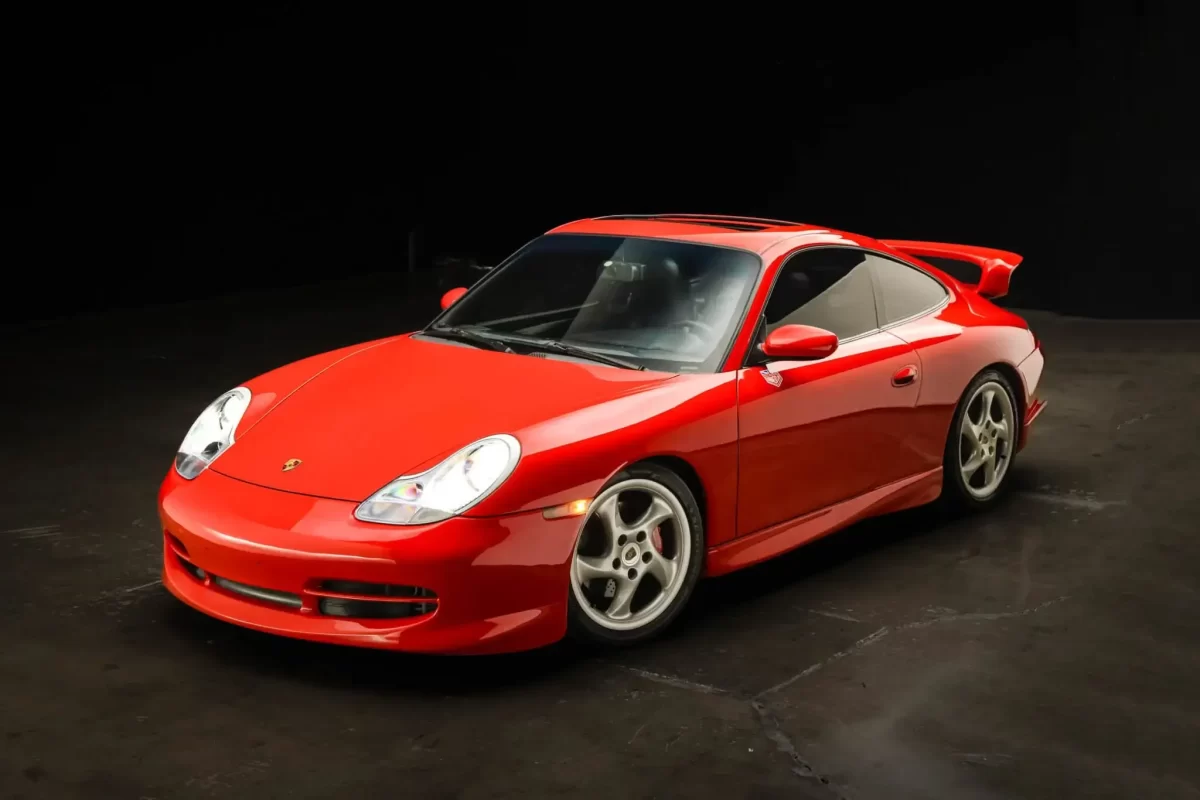
Does Magnus Walker Actually Drive Them?
Absolutely. If there’s one thing that defines Magnus Walker, it’s motion. His cars aren’t trailer queens, they’re canyon carvers, downtown prowlers, and track-day warriors. He’s regularly seen at LA’s Mulholland Drive, pushing his custom 911s like they were meant to be driven.
Walker’s cars wear their miles with pride. Scuffs, scrapes, and stone chips are welcome. “A rock chip is just a badge of honor,” he likes to say. For him, driving is the whole point.
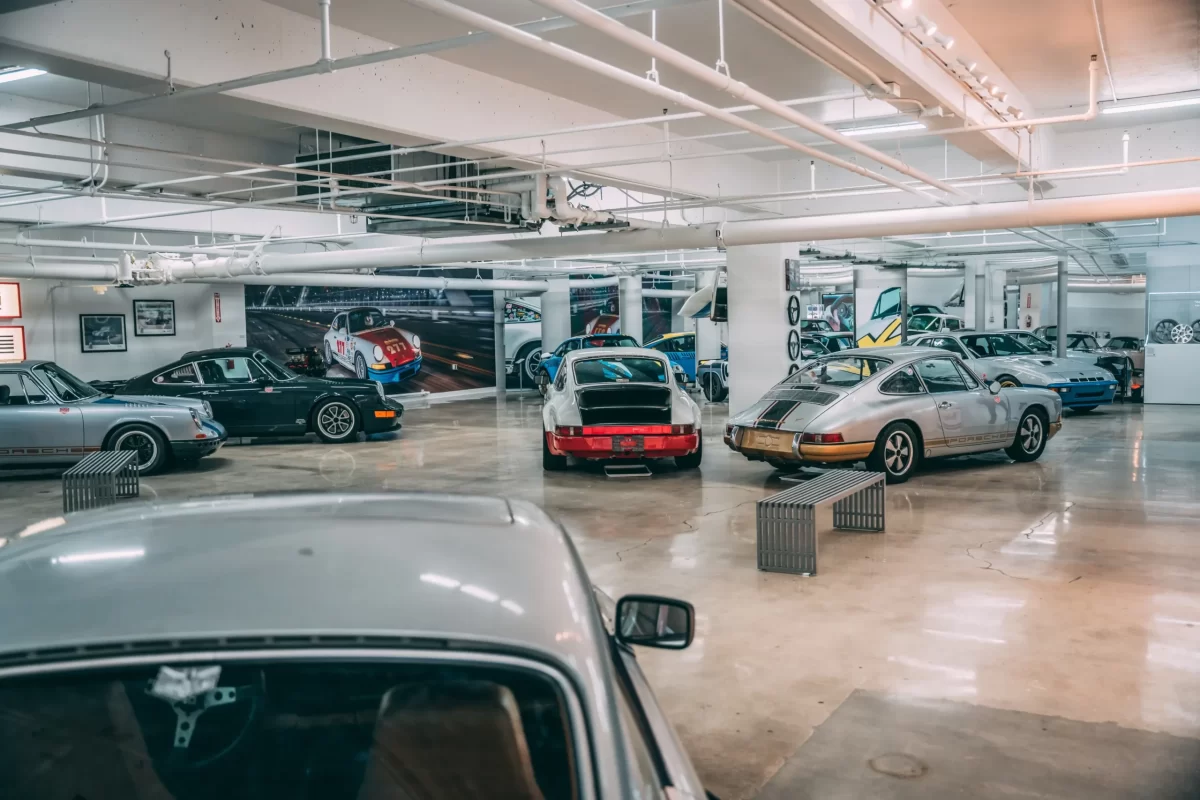
What the Collection Says About Collecting
Magnus Walker’s collection doesn’t follow the traditional rules. There’s no safe filled with service records, no obsessive emphasis on matching numbers, and certainly no concern with what’s hot at RM Sotheby’s this season.
Instead, it tells a story about freedom to build what you want, drive what you love, and collect based on feel rather than forecast. This is a refreshing reminder: you don’t need to wear gloves to touch greatness. You don’t need to chase concours trophies to be a real collector. You just need to care. Deeply.
Whether it’s a blue-chip Carrera RS or a misunderstood 996, what matters is the story you build around the car. And that, as Magnus Walker has proven, is what turns a collection into a legacy.